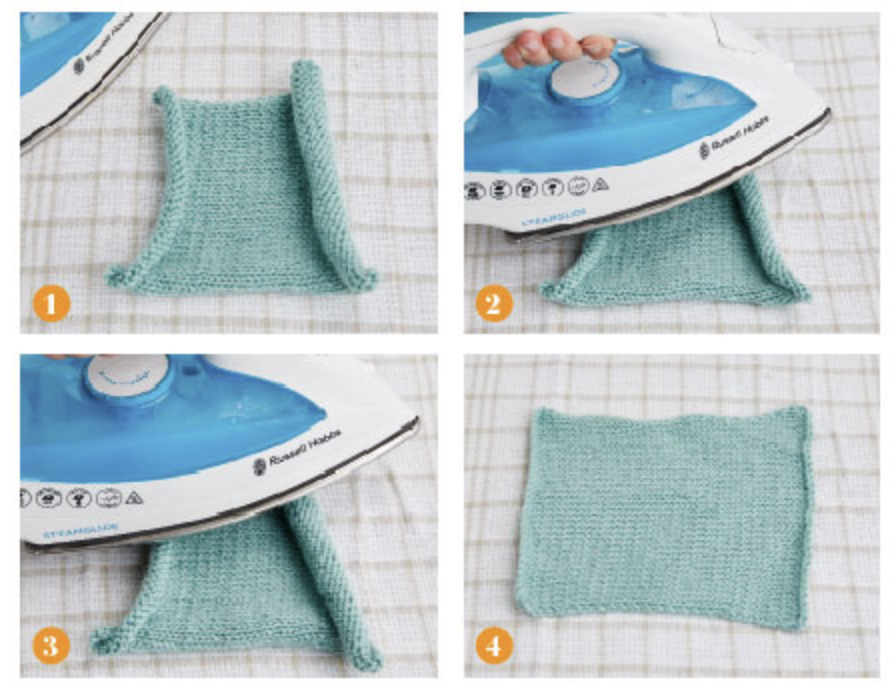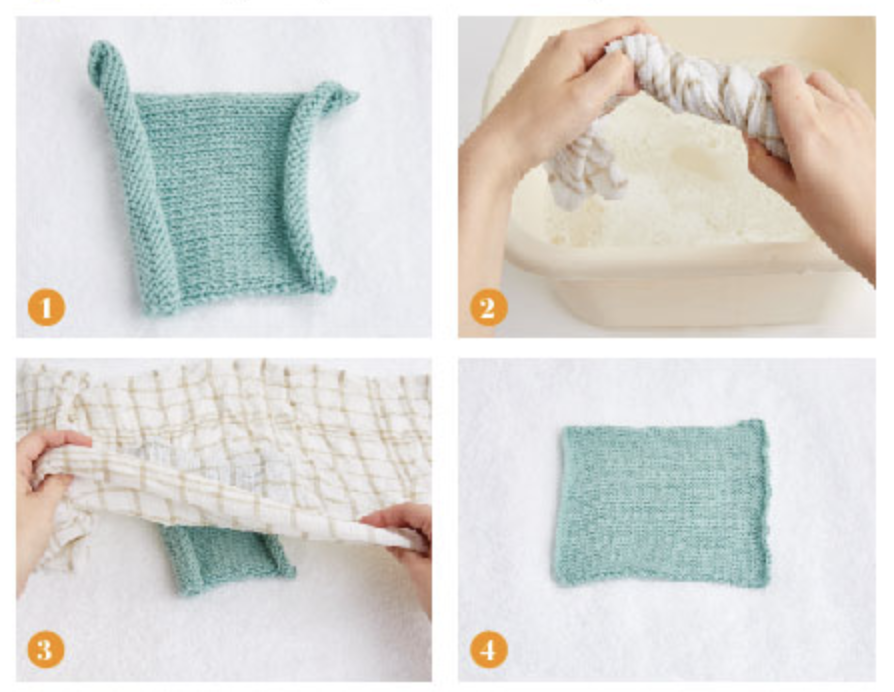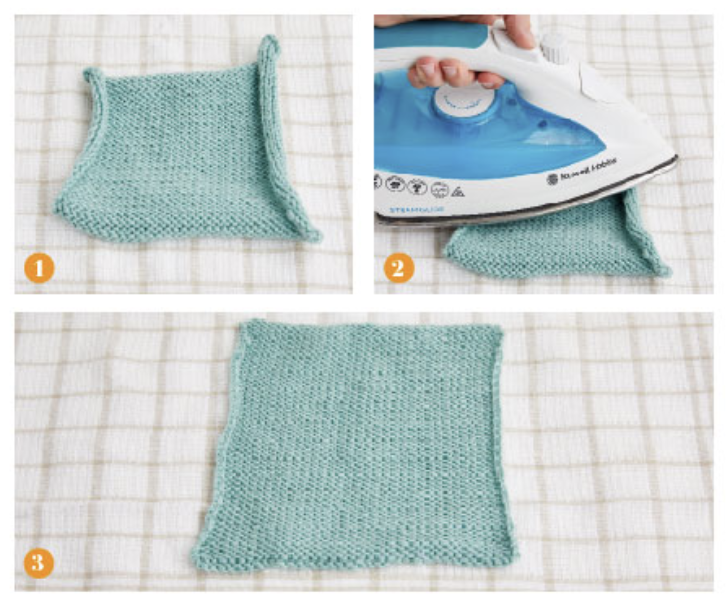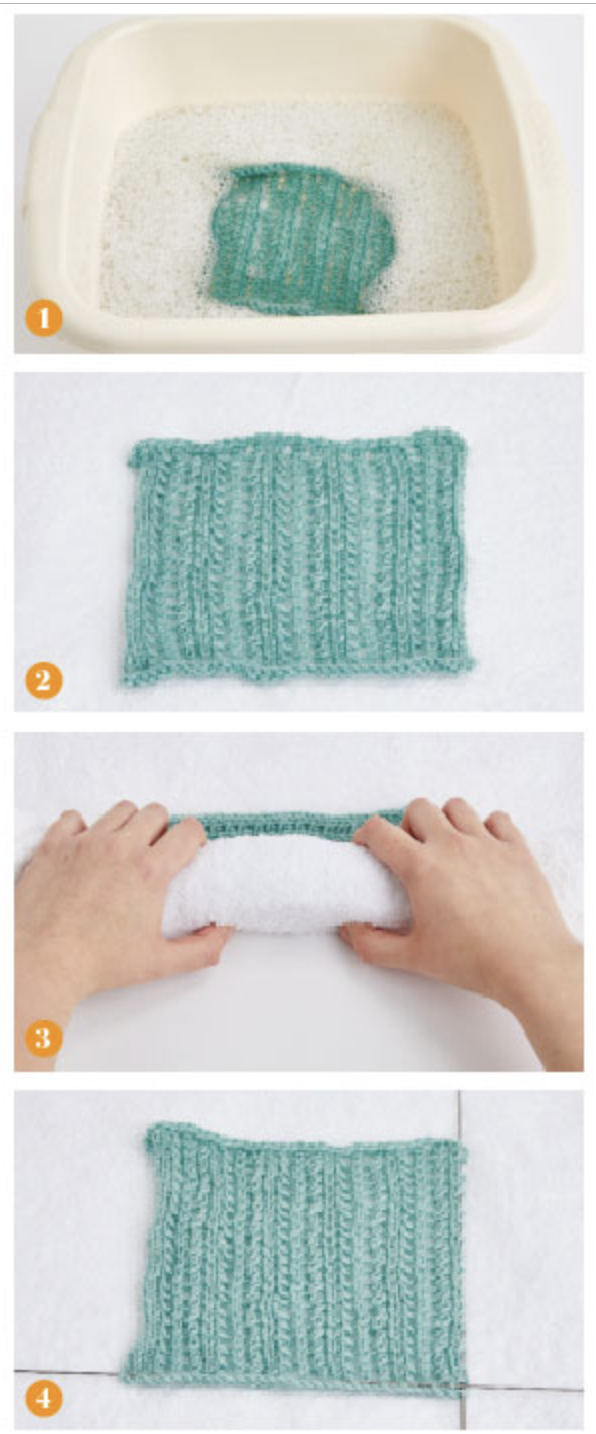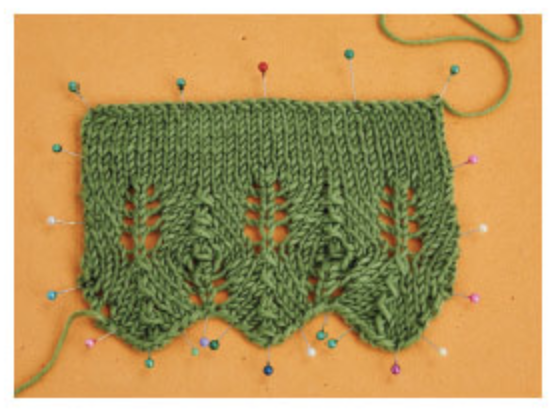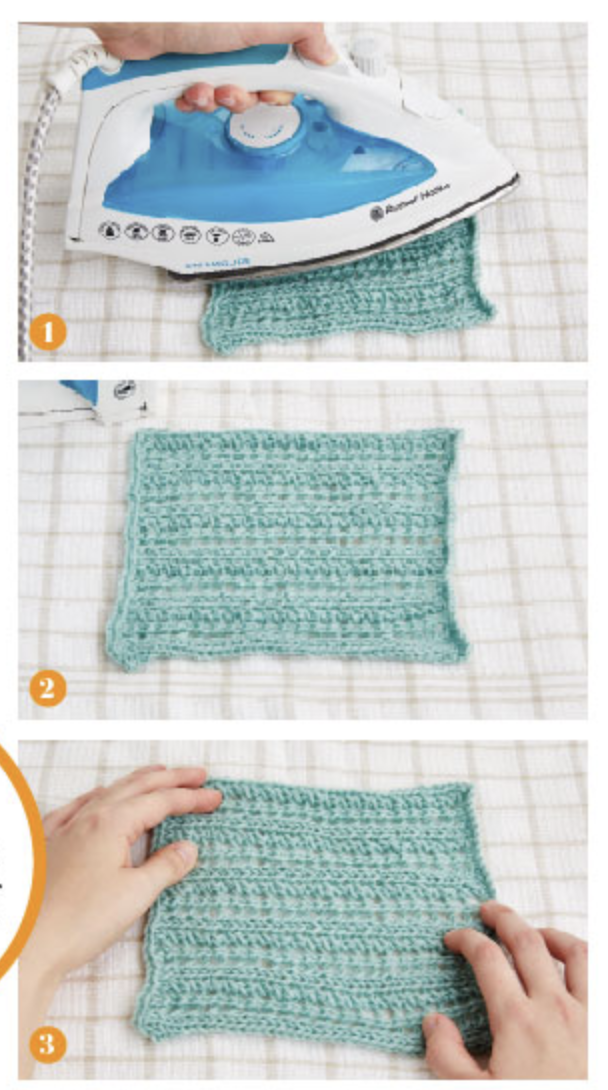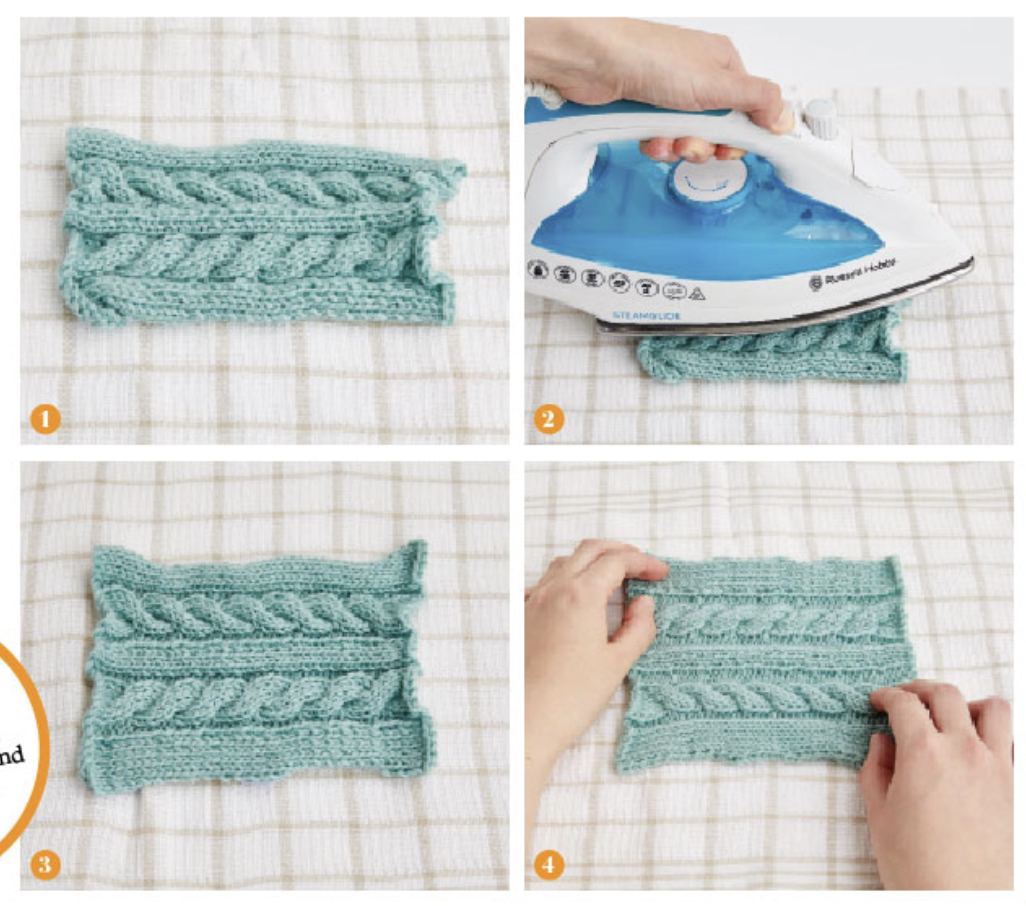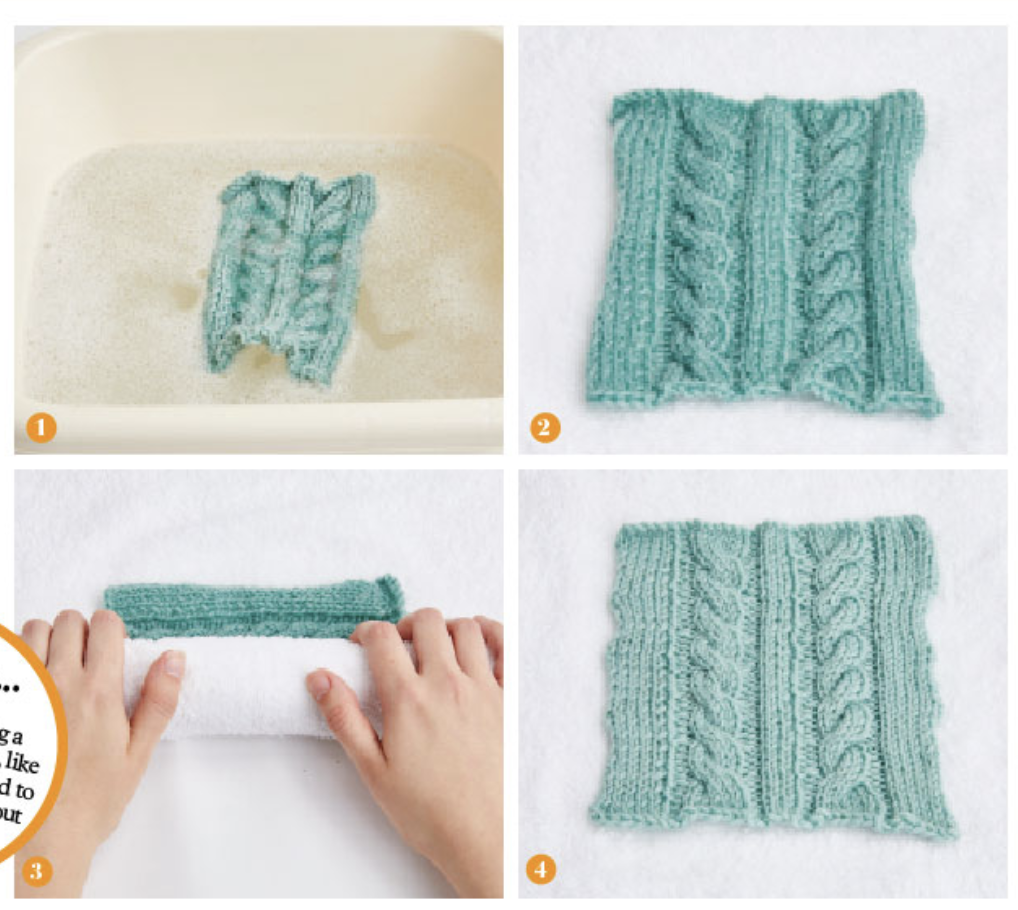The first time you finish a big knitting project, the thought of sewing it all together can be a bit off-putting. Those curly or uneven edges are not motivating, especially when they make sewing seams more than a little bit tricky. It could be so disappointing if all your hard work ends up in the making-up basket where it languishes unloved for months or years! But don’t despair – this is where blocking is your friend.
Blocking may be a slightly odd word, but it’s simply the art of preparing your knitted fabric for its final use by using various techniques to even it out. If you’ve been working in stocking stitch, this can be as simple as getting the edges to lay flat. For a lace pattern it will probably mean stretching your work so that the eyelets (holes) show up better. With cable or rib fabric, blocking may only be very gentle as you don’t want to over-stretch your stretchy fabric.
Whichever method you choose for your knitted fabric, blocking can make the difference between a homemade and a handmade finish. If you’ve spent weeks knitting something, it definitely pays to take the time to give it that extra bit of care – we guarantee you’ll be glad you did!
How to block knitting – stocking stitch
Stocking stitch is the easiest style of fabric to block as it is very smooth and even. All you’re really doing when blocking stocking stitch is uncurling the edges and straightening up the stitches. It might not seem worth the hassle, but stocking stitch is much easier to seam if you block it first, so take the time to do it and you’ll be amazed at the difference. Here are three methods to try, depending on the composition of your knitted fabric.
Method 1: Steam blocking
- Suitable for: all yarn types
It's important to remember that if your swatch has been knitted using acrylic, nylon or polyester yarn, take great care not to touch the fabric with the iron or let it get too hot, or there's a significant chance our united fabric will melt! If you're unsure, or concerned, you may prefer to go for the next option – covering your work with damp cloths.
Method 2: Cover with damp clothes
- Suitable for: acrylic, all wools
- Not suitable for: cotton, silk, alpaca
This is quite an old-fashioned method of blocking and you'll often see it suggested in vintage patterns. It works well for fibres like acrylic and wool that dry quickly, but avoid it for cotton, silk and alpaca, which can all be slow to dry and may not dry out properly at all with damp cloths over them.
Method 3: Iron on the reverse
- Suitable for: cotton, super wash wool
- Not suitable for: anything fluffy, acrylic, non-superwash wool, silk
Most finishing experts will tell you never to iron a piece of knitting. It's true that ironing can squash the stitches and even make them shiny. Certainly it's only suitable for stocking stitch sections but as long as you're gentle it's OK – test it on a swatch first if you're worried about ruining your fabric.How to block lace knitting
Although you can use any of the first three options explained for stocking stitch fabric, lace knitting looks better when you block it firmly, opening out the holes and showing off all those lovely stitches! Lace responds so well to blocking, it’s worth using natural fibres for lace projects if you can – wool, alpaca, cotton or silk (or blends of these fibres). Yarn made from synthetic fibres like acrylic or nylon has a tendency to ‘ping back’ when blocked firmly. Each time you wash your lace knit, repeat the blocking process – it pays off.
How to block lace knitting
Method 1: Soak and stretch with blocking wires (straight edge)
- Suitable for: all natural fibre yarns
- Not suitable for: synthetics
Blocking wires are great for getting a straight edge on garments or pieces of garments. You can buy special kits with blocking wires and mats, but children's interlocking play mats and welding rods will do exactly the same job, and they are cheaper too!
Method 2: Soak and pin out with T-pins (Scalloped edge)
- Suitable for: all natural fibre yarns
- Not suitable for: synthetics
This technique is perfect for shawls, or any knitting that has a scalloped edge. Secure your knitting with pins (large or T-pins are best), or you can use blocking wires to create a scalloped or pointed edge by threading them through the edges, with intervals between each 'point'. Bear in mind, if you want a straight edge you can achieve one by using lots of pins, but using blocking wires is quicker and easier.
Method 3: Steam and gently stretch
- Suitable for all yarns
This method is suitable for lace fabric made from synthetic yarns. You won't get the same dramatic effect as if you stretch out the fabric properly as in options 1 and 2 above, but it will still help the appearance of the lace, helping to show off your pretty lace stitches.
How to block cables or rib
When blocking cables or rib, you want to do the opposite of ‘hard’ lace blocking and just gently stretch out the fabric so that it doesn’t lose all of its spring! It’s best not to iron cable or rib as you can flatten them out really easily, and they’ll never look quite the same again.
Method 1: Steam and gently stretch
- Suitable for: all yarns
This blocking method is suitable for all cabled fabrics. The aim is to help the fibres relax so that the stitches even out without losing their plump, three dimensional look.
Method 2: Soak and lay flat to dry
- Suitable for: all yarns
This blocking method is suitable for all cabled fabrics. The aim is to allow the water to help even out the stitches, creating a smoother finish.
